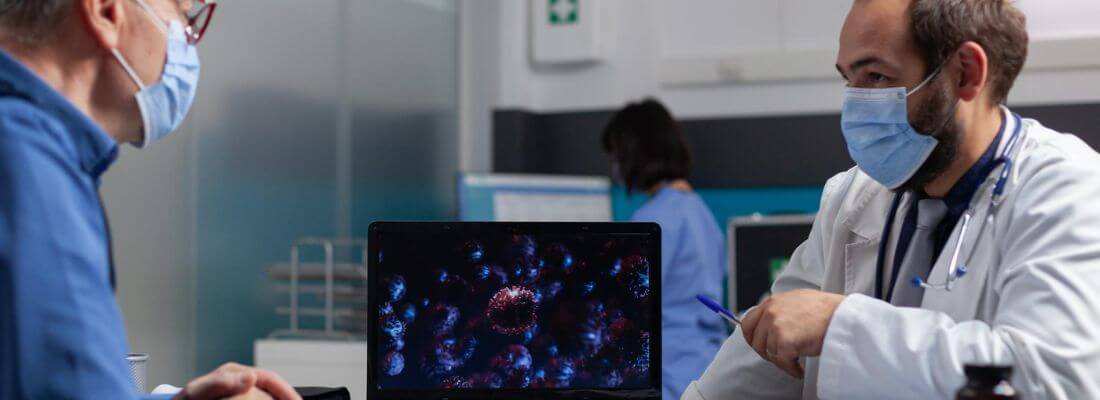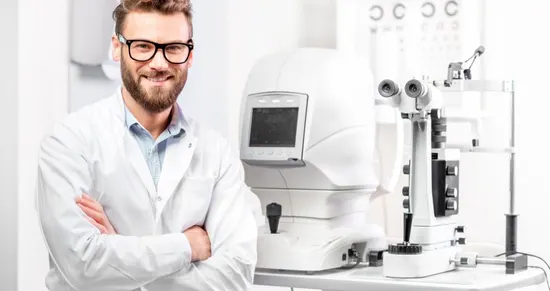Today, launching a medical device successfully hinges on bridging the regulatory differences across various jurisdictions. Companies must ensure FDA compliance in the United States while meeting the strict standards of EU MDR regulation in Europe.
In this blog, let’s see the critical aspects of regulatory alignment in medical device regulatory affairs and provide actionable insights that can help streamline the medical device approval process globally.
The Importance of Regulatory Alignment for Global Medical Device Launches
Global market entry demands a unified approach to regulatory adherence. Aligning FDA compliance and EU MDR regulation standards helps manufacturers simultaneously address quality, safety, and performance requirements. When manufacturers align these requirements, they mitigate risks associated with disparate standards, reduce redundant testing and documentation, and accelerate time-to-market.
Regulatory alignment also reinforces a company’s commitment to quality and safety, building trust among healthcare professionals and end users. This is crucial in medical device regulatory affairs, where the credibility of a product directly impacts its market success.
Key FDA Compliance Requirements for Global Medical Device Approval
The U.S. enforces one of the strictest medical device regulatory frameworks, mandating rigorous FDA compliance through the following key requirements:
- Premarket Submission: The FDA offers different paths for getting a medical device cleared or approved based on its risk and uniqueness.
- Manufacturers usually use a 510 (k) notification for most low- to moderate-risk devices (Class I and II), with an expedited option available through a Third-Party Review for some moderate-risk devices.
- High-risk devices (Class III) generally require Premarket Approval (PMA). If a moderate-risk device is new without a similar existing device, it may need a De Novo Classification Request.
- Additionally, devices meant for rare conditions can qualify for a Humanitarian Device Exemption (HDE), and an Investigational Device Exemption (IDE) allows for clinical studies.
- Quality Management Systems: Compliance with quality management standards such as ISO 13485 is essential. These systems ensure that devices are developed and manufactured under controlled processes that meet FDA requirements.
- Post-Market Surveillance: The FDA mandates rigorous post-market monitoring to swiftly identify and address potential safety issues. This continuous feedback loop is critical for ensuring the FDA regulations for medical devices are met.
- Clinical Data: Reliable clinical data is often required to substantiate the safety and effectiveness of the device. This involves extensive clinical evaluations and trials, which are central to the FDA approval process.
By carefully addressing these elements, manufacturers can create robust submissions that can withstand FDA scrutiny, paving the way for a successful launch in the United States.
Understanding EU MDR Regulation for Global Market Entry
EU MDR regulation emphasizes patient safety, transparency, and the traceability of devices throughout their lifecycle. Key aspects of EU MDR include:
- Enhanced Clinical Evaluation: Compared to previous directives, EU MDR requires more comprehensive clinical data to demonstrate device safety and performance. Manufacturers must conduct thorough clinical evaluations and maintain continuous post-market clinical follow-up.
- Increased Scrutiny of High-Risk Devices: For high-risk devices, particularly those categorized under MDR for medical devices, the regulatory authorities demand rigorous risk assessment and management procedures.
- Expanded Documentation Requirements: Detailed technical documentation is mandatory, covering all aspects of device design, manufacturing, and post-market surveillance. This ensures full transparency and traceability, which are critical for EU MDR compliance.
- Notified Body Oversight: Unlike the FDA’s internal reviews, EU MDR mandates that notified bodies conduct independent assessments, ensuring that only the safest devices reach the market.
Manufacturers must align their development and quality management practices to meet these stringent requirements. Under EU MDR, medical devices are categorized according to the potential risk they pose to patient safety.
The regulation defines four primary classes: Class I, IIa, IIb, and III, with Class I representing the lowest risk. Furthermore, Class I devices are subdivided into:
- Class I: Standard low-risk devices
- Class Is: Sterile devices
- Class Im: Devices with a measuring function
- Class Ir: Reusable surgical instruments
Additionally, devices are grouped based on factors such as being non-invasive, invasive, active, or subject to special rules such as Class I includes items like bandages, glasses, and stethoscopes; Class IIa encompasses hearing aids, surgical clamps, and catheters; Class IIb covers ventilators, insulin pens, and long-term contact lenses; while Class III comprises high-risk products such as pacemakers, prosthetic heart valves, and surgical mesh.
Challenges of Launching a New Medical Device Globally
- Divergent Regulatory Requirements: The FDA and EU MDR have distinct regulatory approaches. While the FDA focuses on demonstrating substantial equivalence and safety through comprehensive data, the EU emphasizes a risk-based approach with enhanced clinical evidence and detailed technical documentation.
- Resource Allocation: Managing simultaneous submissions to different regulatory bodies demands considerable resources, both in terms of time and financial investment. This can be particularly challenging for smaller companies with limited budgets.
- Cultural and Language Barriers: Global submissions require precise translation and localization of documents to ensure that all regulatory information is accurately conveyed and understood by different authorities.
- Changing Regulations: Regulations are constantly evolving, so staying informed of the latest changes and ensuring compliance with both FDA medical device standards and EU MDR regulations demands ongoing attention and flexibility.
These challenges necessitate a proactive and integrated approach to regulatory planning and management.
Steps to Align FDA Compliance and EU MDR Regulation
A systematic strategy is key to aligning regulatory requirements across the US and European markets. Here are critical steps manufacturers can take:
- Conduct a Regulatory Gap Analysis: Evaluate current processes against both FDA and EU MDR standards to identify areas of divergence and overlap. This analysis should form the basis of a unified compliance strategy.
- Develop an Integrated Quality Management System: Incorporate quality management practices that satisfy both FDA requirements and EU MDR regulations. An integrated quality management system delivers additional benefits, including systematic risk management that identifies and mitigates hazards throughout the product lifecycle, streamlined operations for improved productivity, and enhanced global market access. Moreover, it reinforces regulatory compliance, bolsters corporate reputation, and builds stakeholder trust by adhering to internationally recognized quality standards.
- Centralize Documentation: Create a centralized repository for all regulatory documents. This ensures consistency and facilitates easier access during audits and inspections.
- Invest in Regulatory Training: Ensure the regulatory affairs team is well-versed in US and European standards. Continuous training and knowledge sharing can bridge the gap between disparate regulatory frameworks.
- Implement Robust Post-Market Surveillance: Establish systems to monitor device performance and manage adverse events. This is critical for maintaining ongoing FDA compliance and EU MDR compliance.
By following these steps, manufacturers can build a resilient regulatory framework that supports global device launches and accelerates the medical device approval process.
Leveraging MDSAP Certification for Global Medical Device Launches
The Medical Device Single Audit Program (MDSAP certification) offers an effective pathway to streamline regulatory compliance across multiple markets, including the US, Canada, Brazil, Japan, and Australia. MDSAP certification is designed to align with both FDA regulations for medical devices and other international standards, providing several advantages:
- It reduces redundant inspections by integrating audits, thereby saving valuable time and resources.
- Certification fosters the development of a robust quality management system that meets international safety and efficacy standards.
- Leveraging MDSAP certification accelerates global market entry by simultaneously aligning with diverse regulatory requirements.
- It signals regulatory excellence and enhances reputation among stakeholders such as regulators, healthcare professionals, and customers.
- This certification promotes continuous improvement, proactive risk management, and operational efficiency across the entire product lifecycle.
- The program facilitates a comprehensive understanding of regulatory expectations, ensuring documentation and processes remain audit-ready.
Overall, utilizing MDSAP certification streamlines compliance efforts, boosts competitive advantage, and is a strategic asset for global medical device launches.
Regulatory Considerations for IVD Devices in Global Markets
In vitro diagnostic (IVD) devices face unique regulatory challenges that differ from other medical devices. IVD regulation is subject to distinct requirements both in the US and Europe:
- US Requirements: In the United States, IVDs must comply with specific FDA regulations, including rigorous clinical evaluation and performance testing. This often involves specialized submissions that address the unique aspects of diagnostic technologies.
- European Requirements: Under EU IVDR, IVD devices are subject to increased scrutiny, including detailed risk assessments and performance evaluations. The European In Vitro Diagnostic Regulation (IVDR) adds further complexity, necessitating a tailored approach to EU IVDR compliance.
- Global Integration: For manufacturers aiming to launch IVDs globally, aligning regulatory strategies across different markets is crucial. This involves integrating quality systems, standardizing performance testing data and ensuring that both FDA compliance and European IVD regulations are met.
Understanding these nuances is essential for navigating the complexities of IVD device regulation and achieving successful market entry.
Accelerating the Global Medical Device Approval Process
Time-to-market is a critical factor in the competitive medical device industry. Accelerating the approval process while maintaining compliance with both FDA compliance and EU MDR regulation can be achieved through several strategies:
- Early Engagement with Regulators: Establish open lines of communication with regulatory bodies early in the development process. Timely feedback can help preempt issues and streamline subsequent submissions.
- Integrated Clinical Trials: Design clinical studies that meet the requirements of both the FDA and European regulators. This dual approach can reduce the need for duplicate studies and accelerate data collection.
- Utilize Digital Platforms: Use digital tools for document management, regulatory submissions, and post-market surveillance. Automation and electronic systems can enhance efficiency and reduce errors.
- Collaborative Partnerships: Work with experienced regulatory consultants like Maven and industry associations to stay informed about evolving requirements and best practices in medical device regulatory affairs.
These strategies speed up the medical device approval process and ensure that products remain compliant and safe for market launch.
Conclusion
Aligning with FDA compliance and EU MDR regulation is essential for global market success. Integrating these frameworks simplifies the medical device approval process, cuts unnecessary duplication, and builds a focus on quality and safety.
Choose MAVEN for streamlined quality management systems, centralized documentation, expert MDSAP certification support, prompt regulatory engagement, and ongoing risk management—helping you launch products faster, cut delays, and meet regulatory standards.
References







